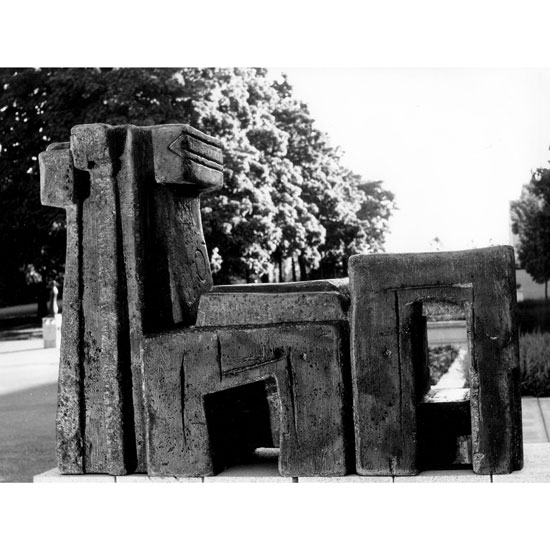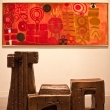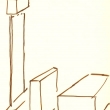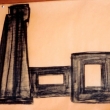Information:
First exhibited in 1961 at UBC, in a “One-Painter One-Sculptor” show with Herbert Siebner. Then exhibited in 1964 in the Canadian Pavilion at the Venice Biennale.
The model for "Black Priestess" is now known to be Marie Maggiore Wilkinson, ballet dancer and dance teacher, former wife of Jack Wilkinson, and model for the Jan Zach group. A later, more architectural, version of the "Priestess", called "Thronepiece", was originally called "This Is Marie". As well, casting instructions for this piece to Racine Foundry, Detroit, 1965, refer to "This Is Marie".
All the other priestesses, in their many sizes and variations, from a width of 54 inches down to a half-inch, proceed from this one sculpture. Regardless of size, the strong form always holds true. The artist’s intent was, some day, to “make the Priestess as large as a building, so people could walk through the passageways”.
In an unpublished essay dated 1972, Kenneth Coutts-Smith wrote: “There is, in Mayhew’s work, a whole family of sculptures where a sense of a mysterious inner space, of secret chambers, is wedded to a distinct elegiac quality… Ossip Zadkine, confronted by this piece, pointing at a depression in the surface, once said to Mayhew, ‘I want to be buried right there. Make it big enough for me to be buried right there’.”
Elza Mayhew: Pencilled working notes for Priestess, 1961:
1. to have a great refinement –
in form
in proportion.
2. to be “open” –
to the space around
to the human –
3. to be the ultimate in understatement
4. perceptual
conceptual
architectural
personal
Endnote
In 1971, Elza was visited by Japanese artist Isamu Akino (1935 – 2011) who had become known for his rubbings of ancient Nepalese stone carvings. Isamu, with his young family, lived and worked in Elza’s studio for that year, while making more than 75 rice paper rubbings and impressions from her sculptures.
The rice paper rubbings were made using black inks for the most part, though he sometimes chose sepia, red, blue or blue-green inks. The rubbings also included “wrap-arounds” [see Guardian I], collages, and detail sections.
To make the impressions, Isamu dampened the rice paper and pressed it into the crevices and apertures of the sculptures, creating a third dimension. The rice paper was left in its natural beige. [See Fabled City, Holy Man.]
Isamu’s rubbing from the Black Priestess was later made into a series of silk-screen prints in four different colour variations.







